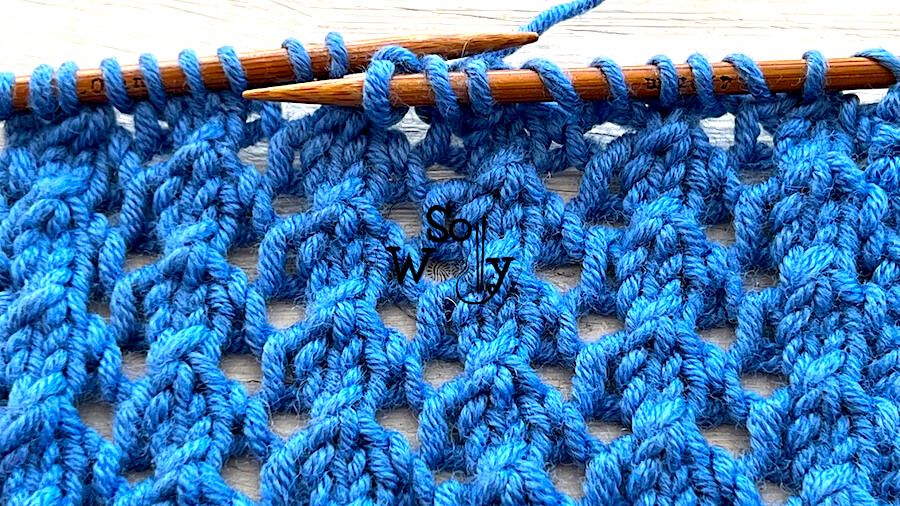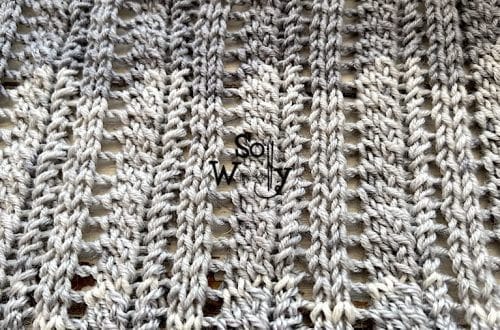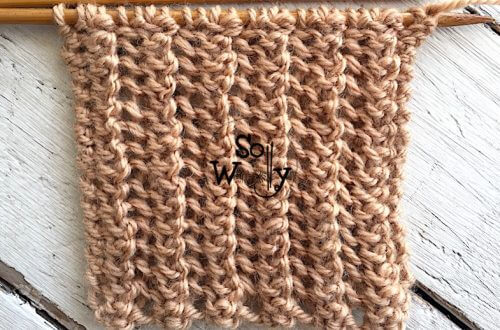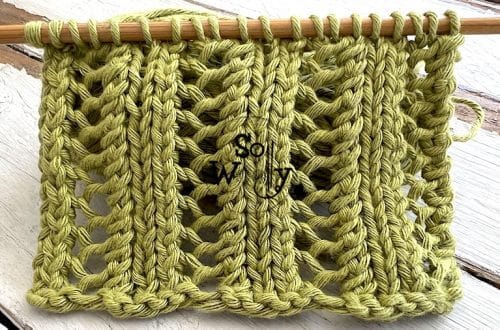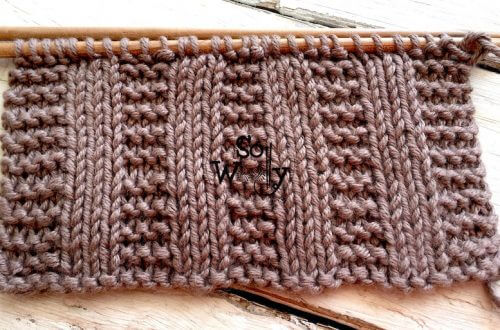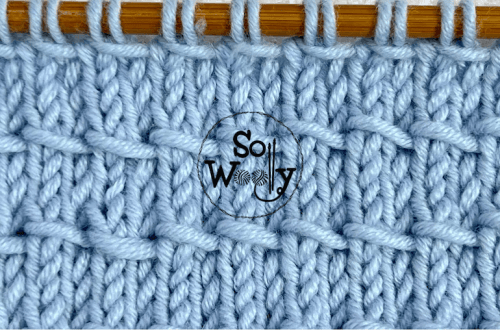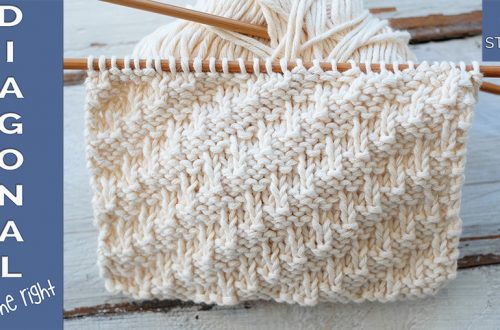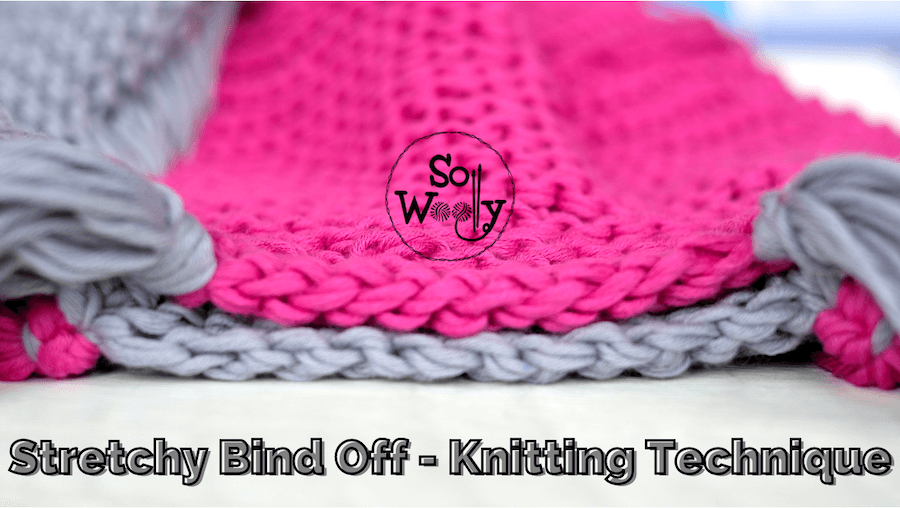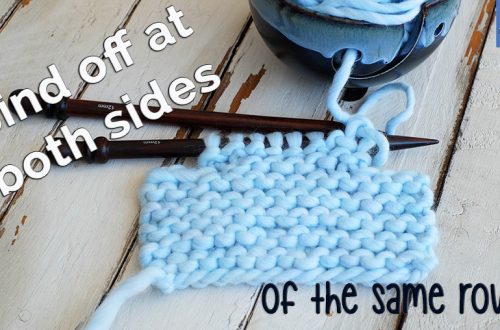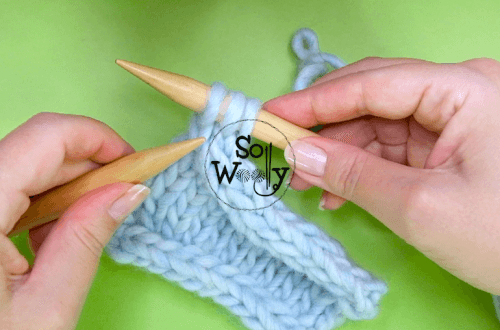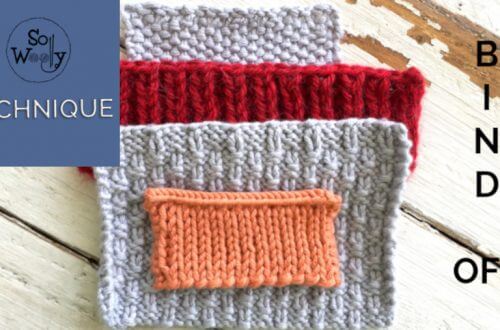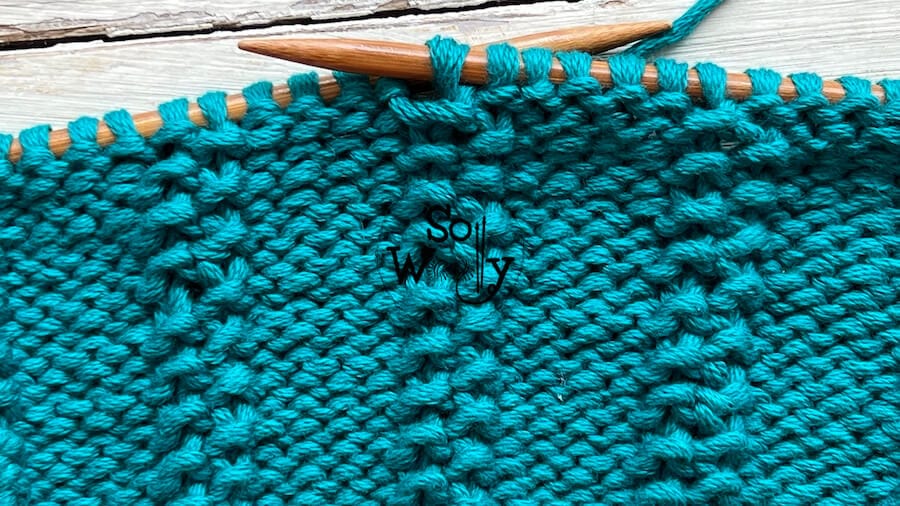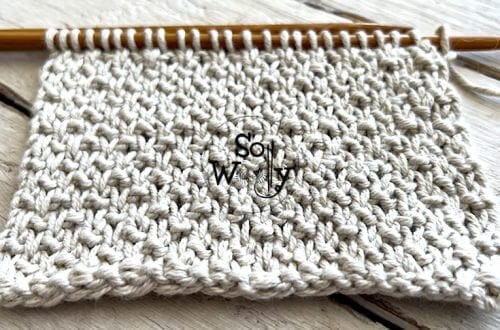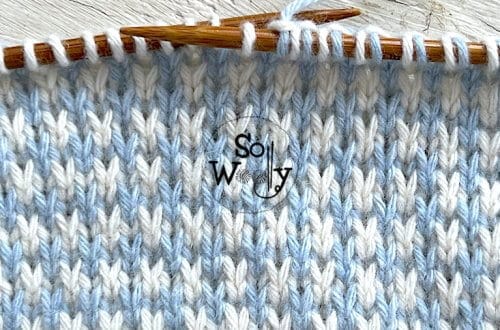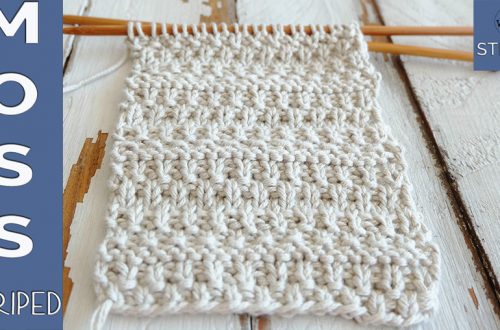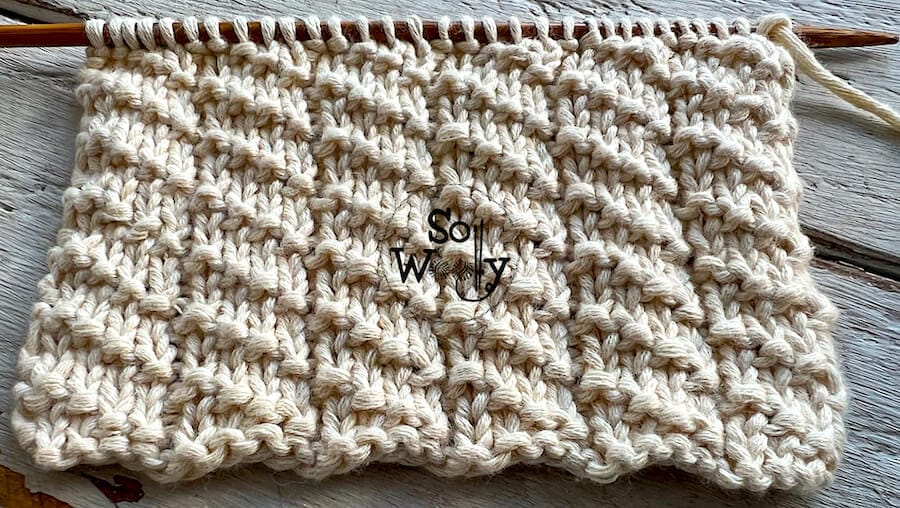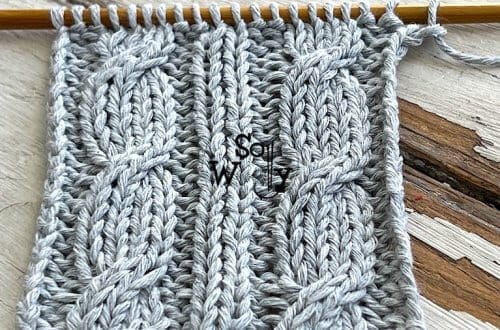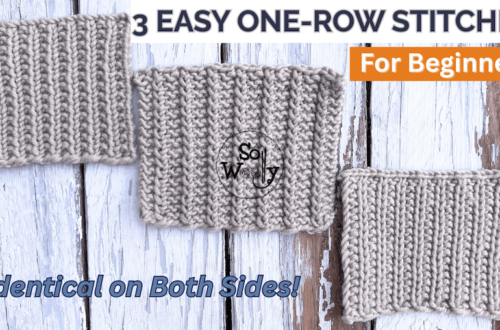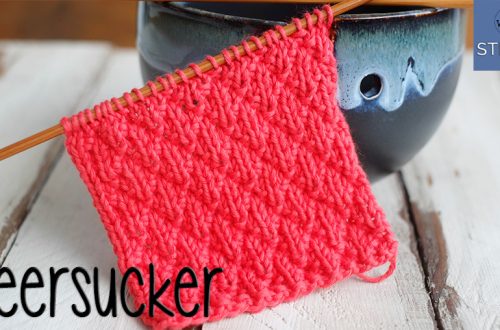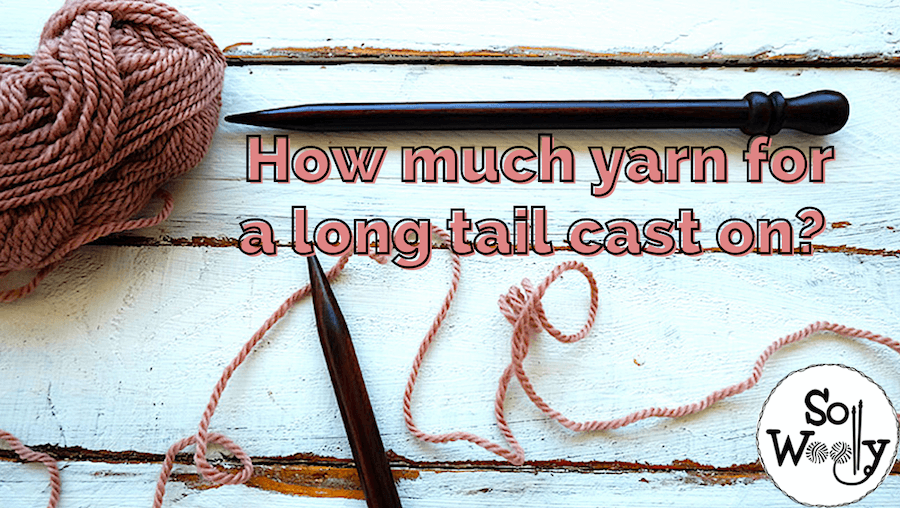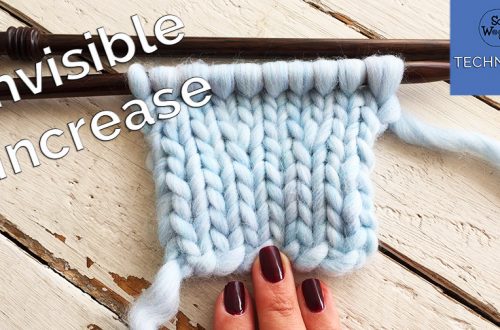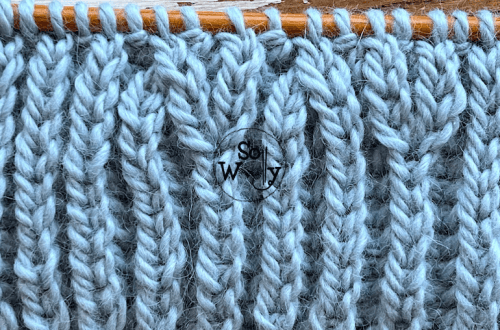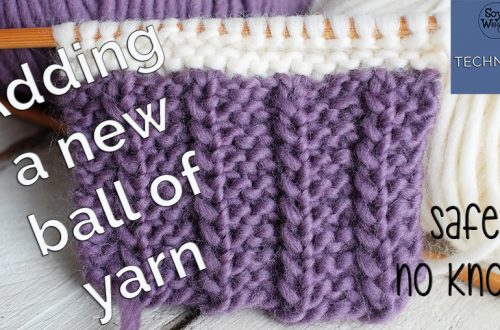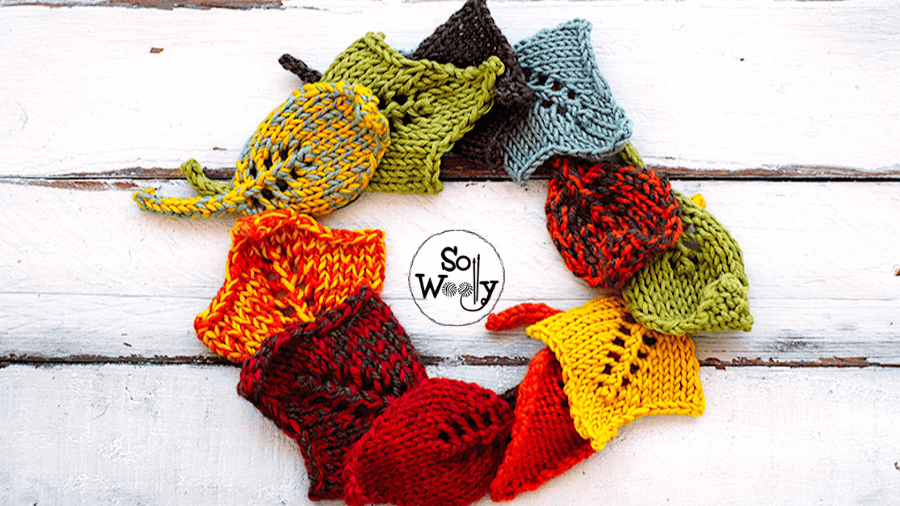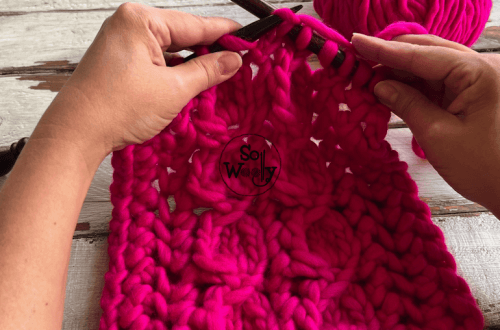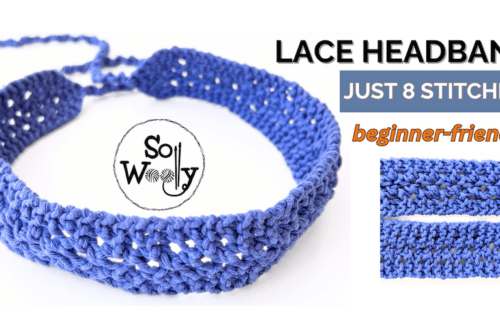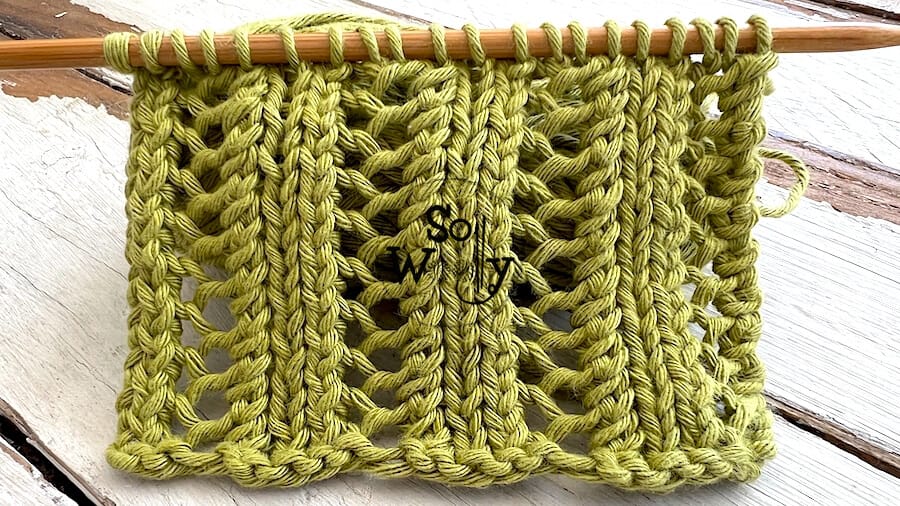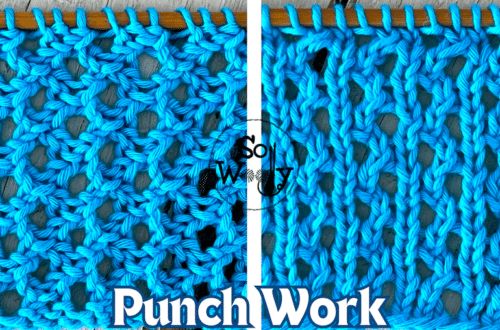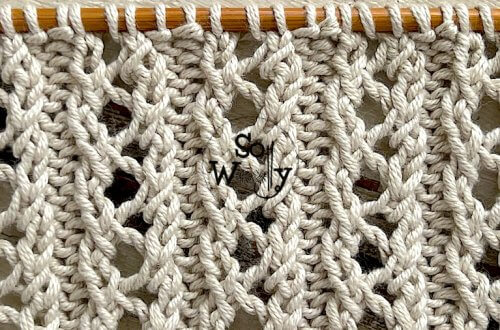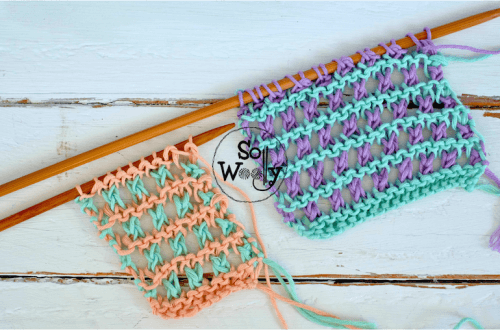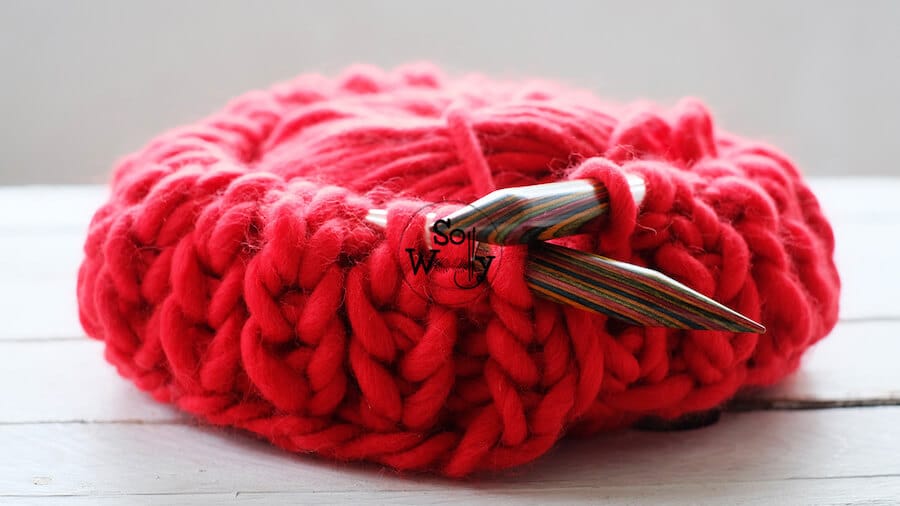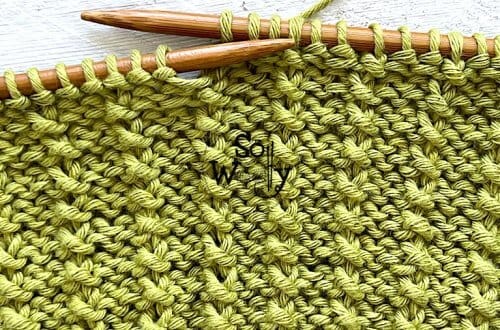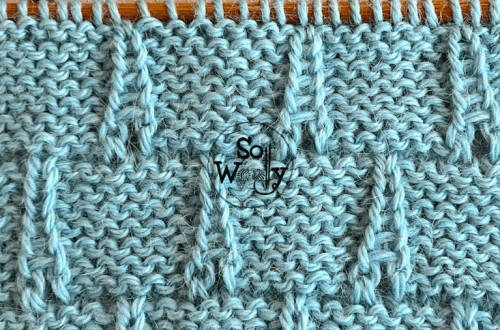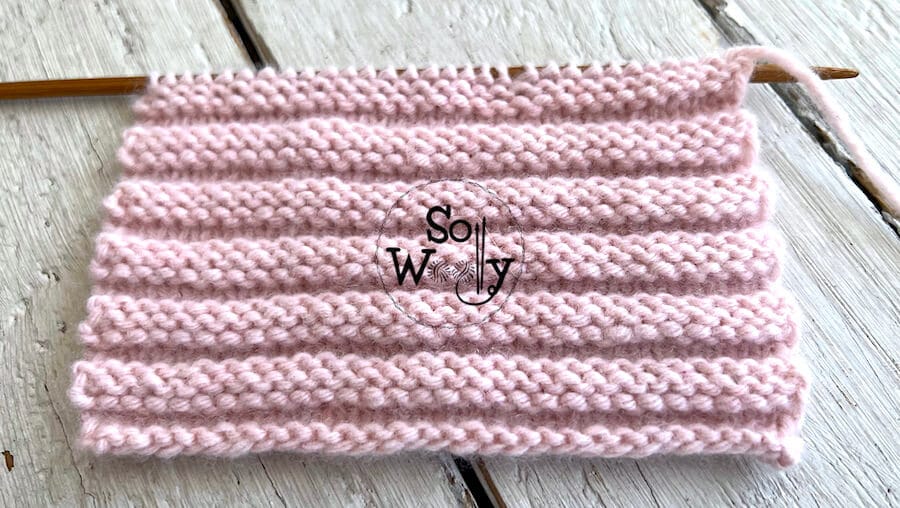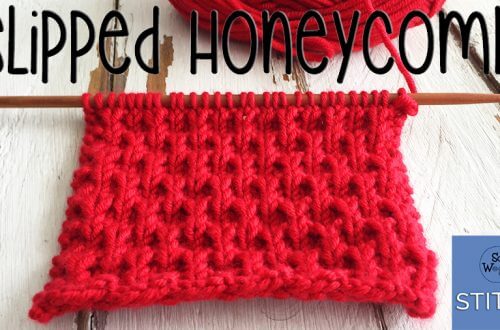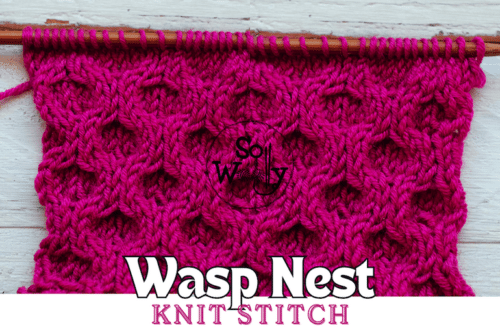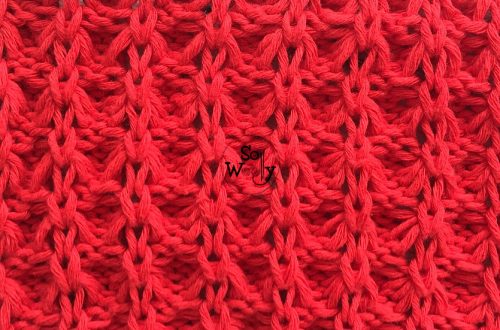-
How to knit the Fancy Openwork stitch pattern
Today, you’ll learn how to knit the Fancy Openwork stitch, which as you know is absolutely gorgeous 🙂 It’s a four-row repeat pattern, two of which are plain purl rows… easy-peasy! In fact, when working the odd rows, the only two techniques used are: yarn over, and knit three stitches together. And the same steps will be repeated throughout those two rows, so it’s also quick to memorize. The Fancy Openwork stitch is a pretty versatile pattern: Use wool (or any of its blends), for Autumn-Winter clothing and accessories. Or use cotton or linen, or their blends, for Spring-Summer garments. In addition, it’s a great pattern for scarves, cowls, tops,…
-
How to knit the Double Andalusian stitch pattern
In this tutorial, you’ll learn how to knit the Double Andalusian stitch pattern (a second version…Olé). We practiced another version of the Double Andalusian knitting pattern some time ago, very similar to this one, except that the little horizontal ridges are diagonal 😉 And most recently, I shared how to knit the simple Andalusian stitch, another lovely pattern! What these variations have in common is that all of them look pretty, they are super easy to do, and they combine only knit and purl stitches, which make them ideal for beginners. Additionally, the Double Andalusian stitch is great for a wide range of projects: From baby stuff, cushions, and placemats,…
-
How to do a Stretchy Bind Off (Knitting Technique)
In this tutorial, you’ll learn how to do a stretchy bind-off, step by step. It’s a useful knitting technique, for several reasons: First of all, it will help you with the tension of the stitches. I’m aware that for some knitters, binding off when using the knitting needles is a real pain in the backside. In fact, there are many ways of finishing your knit work, including the 3 needles bind-off technique, but it’s also true that some knitters don’t get the results they’re looking for 😉 Either they end up having a too tight finish, or just the opposite, it’s too loose. Honestly, with this technique, you’ll have total…
-
How to knit the Fancy Moss stitch Rib (only two rows!)
In this post, I’m sharing how to knit the Fancy Moss stitch Rib, a lovely variation of the classic Ribbing (like the Half Garter Rib we practiced a while ago). Honestly, I love to have options, because variety is the spice of life 😉 Time and time again I find myself doing the same 2 x 2 Rib automatically, without thinking… and the truth is that there are tons of alternatives. This is why I keep teaching you different patterns, this way I have them in mind when it comes to designing a new project. Oh! I almost forgot! This is another great example: The Lace Rib stitch. In fact,…
-
How to knit the Diagonal Ladders stitch pattern
Today, you’ll learn how to knit the Diagonal Ladders stitch, another pattern great for beginners. 5Why? Well, because there is no need to increase or decrease…yep! Actually, the only techniques required are knit + purl… easy-peasy! It reminds me of the Double Andalusian stitch we practiced a while ago… we could say they share the same DNA 😉 The Diagonal Ladders stitch is a four-row repeat pattern, and the repeat is short, so it doesn’t matter if you are just starting to knit. In addition, it’s a reversible stitch; although both sides aren’t identical, they look adorable, so you are free to choose which one will be the right side…
-
Tips for Knitters 3: How much yarn to use for a long tail cast-on?
How much yarn for a long tail cast on? Ask yourself just how many times you have pondered that very question… Honestly, the Long Tail method to cast on stitches is one of my favorite tips and tricks to save time and yarn. Why? Well, because the edge of the fabric is more consistent and stretchy… it looks lovely. However, contrary to the “Knitted Cast On method”, the goal is to use your eyes and grey matter to estimate how much yarn to leave at one end. Hands up if you have ever cast on say 80 lovely little stitches, only to realize in horror after 60 that there is…
-
How to knit Autumn Leaves: Beech and Maple (2 Free Patterns)
Summer is over, and maybe you’re in the mood of knitting Autumn leaves? I know I am! So today, I’m sharing how to knit them in two different shapes: Beech and Maple. Autumn is my favorite season, and this year I would love to do a garland for my coffee table, using knitted leaves. In fact, I tried to reproduce all the beautiful colors, combining sometimes two different tones at a time, to get this seasonal feeling. I think I’ll knit a couple of 3D pumpkins, to add to this Fall knitting project… Honestly, they are easy and quick to do, just a couple of grams of yarn is…
-
How to knit a cute two-row repeat lace stitch + video
In today’s post, you’ll learn how to knit an easy two-row repeat lace pattern, one of those so-called “proper lace” stitches. As such, they are lace patterns because the increases and decreases are worked on in each row. Whereas Openwork stitch patterns are normally worked purling the even rows of the desired design. So the lace patterns require “more work” according to some, as the even rows or “resting” rows also need our attention, or… “it’s complicated” 😉 Complicated, no, not really… this two-row repeat lace stitch is actually easy to do! Actually, the steps that we have to repeat are the easiest ones when it comes to knitting lace.…
-
How to knit the Fisherman’s Rib stitch in the round
The Fisherman’s Rib stitch worked in the round is a similar and easier knitting pattern than the Brioche stitch. Basically, it’s a traditional two-row repeat pattern, great for hats, and cowls without seaming. Actually, in a previous tutorial, I’ve shown not only how to knit and properly bind off the classic Fisherman’s Rib stitch (flat or back and forth)… But also, another version dedicated to those knitters that are not fans of purling 😉 And by that, I mean that you can knit and bind off the Fisherman’s Rib using knit stitches only… YAY! However, I’ve received many requests to make a tutorial teaching how to do it using circular…
-
How to knit the Horizontal Welts stitch (reversible)
In today’s post, I’m sharing how to knit the Horizontal Welts stitch, another pattern ideal for beginners 🙂 Actually, it’s the perfect knit stitch for hats. Why? Basically, you don’t need to keep track of the stitch count… to make the decreases! By using this stitch, you can knit hats in several sizes, following any pattern you have on hand, and decrease when it’s needed (no calculations required)… YEAP! This is because each row will be knitted or purled entirely; there are no repetitions of different kinds of stitches. Furthermore, the Horizontal Welts stitch is a six-row repeat pattern, pretty easy to do (your only mission is to be aware…
